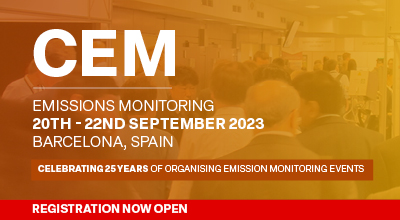| Abstract Title: | Effect of PM/dust size distribution on PM CEMS response in a large scale coal CHP plant |
| Presenter Name: | Mr Erkki Lamminen |
| Company/Organisation: | Dekati Ltd. |
| Country: | Finland |
Abstract Information :
Particle size distribution is an important parameter when a correlation is established between an optical continuous emission monitor (CEM) signal and actual dust mass concentration in a stack. Changes in plant processes such as FGD, SCR and/or ESP operation can cause changes in PM size distribution. These changes may last for a short or a long period of time, depending on the cause. PM size distribution may also be affected by a change in fuel or plant load. A change in PM size distribution may also sometimes cause a change in the total concentration of dust. This allows the determination of how the size distribution affects the CEM signal.
The aim of this study is to establish a relationship between CEM output signal and PM size distribution. This is done via comparing the response of a laser-based CEM installed in a large scale coal CHP plant with data from a real-time PM size distribution measurement instrument.
Real-time size distribution is measured with the High-Temperature Electrical Low Pressure Impactor, Dekati Ltd., Finland (HT-ELPI®+), which allows direct measurement of PM in the flue gas. This prevents any unwanted transformation of the dust during sample conditioning.
High-Temperature ELPI®+ measurement is based on combining particle charging with particle size classification and real-time current measurement. This allows real-time determination of PM size distribution and concentration in the size range from 6 nm to 10 µm. The size classification in the HT-ELPI®+ is achieved with a low pressure cascade impactor. Therefore the particle sizing is based on the aerodynamic diameter of the particles. Particles are charged in a unipolar diffusion charger prior to the size classification in the cascade impactor and individual electrometers are used to determine the amount of particles collected on each impactor stage. Both charger and impactor are heated to a temperature a few degrees above the flue gas temperature to allow direct measurement and minimize sample transformations.
HT-ELPI+ was connected to the power plant stack with a heated line and a heated probe. Isokinetic nozzles were used in sampling to ensure representative data.
The limitation of this study is that we can consider only effects of size distribution on CEM response. Other known CEM influencing factors such as PM/dust optical properties and humidity are not included in the scope of this work.
A relationship between PM size distribution and CEM response will be presented in this work. In addition the limitations, benefits and usage of different measurement methods will be discussed in detail.

